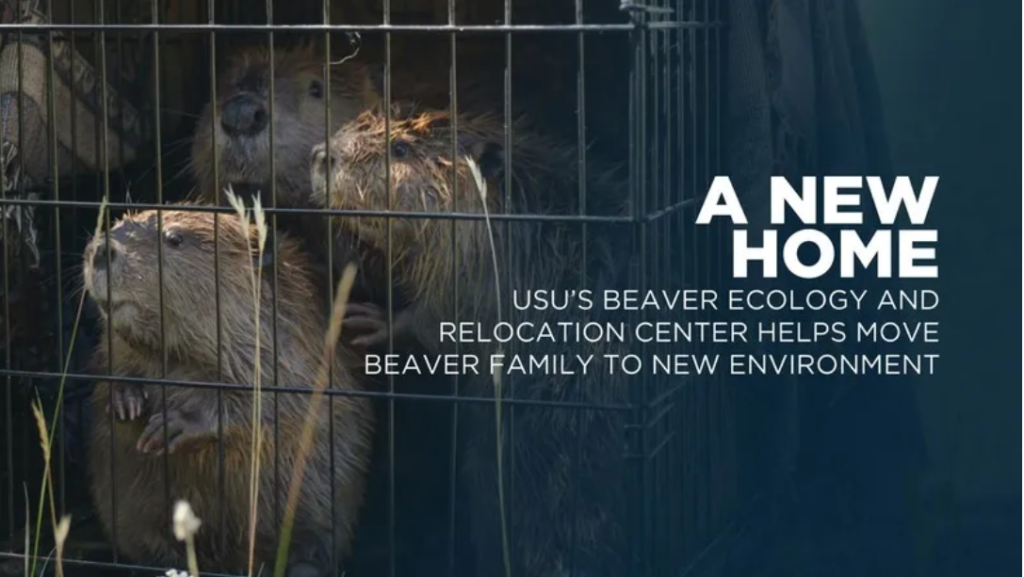Turns out I am not the only one anymore who has mixed feelings about relocating beavers. It’s a hard slog getting housed and released into some new neighborhood with minimal resources. The survival rate isn’t great, but it’s better than the survival rate of being trapped in a conibear. Most of this article sounds fairly sensitive to a beavers needs, which is better than I’ve come to expect.

USU Center Relocates Beaver as Land Managers See Benefits of … – Utah State University
A growing number of land managers and ranchers are noting the perks of having a beaver-in-residence, and are inviting the animals to find a home on their property — with the help of the team at the Relocation Center. The group traps nuisance beavers, evaluates them at the facility’s “beaver bunkhouse” and releases them again into the wild, by invitation only.
First-year Wildlife Ecology and Management student Hailey Simko attended a release in the high Uintas of a recently-trapped beaver family — two adults and two kits. She accompanied the team from the beaver bunkhouse on a 3½ hour drive into the backcountry, with the animals carefully bermed by ice and their cages covered in wet towels to keep them cool and to minimize stress.
“It was awesome to see what this kind of interaction with animals was like in the field,” Simko said. “They were treated with a lot of care and attention and released in what seems an ideal location.” “They seemed so calm and at home it was actually a bit anticlimactic to see them swim away after the release,”she said.
Well I think they added that paragraph just for me. Good job. Yes beavers are calm. They take things very much in stride. You know what’s NOT calm? People worried about beavers. Could you maybe pack them in ice blocks? They are way not calm.
The center offers landowners grappling with problem animals an alternative to lethal trapping. At their new home, beavers have the chance to create wetland habitat, increase biodiversity, improve water quality and even store water to minimize the impacts of droughts, floods and wildfire.
“It’s a win-win-win,” said Becky Yeager, volunteer coordinator at the Relocation Center. “We are saving the beavers, keeping their family intact as much as possible, and putting them in an area where they can restore habitat.”
A Beaver swims upstream after being released into the West Fork of the Blacks Fork River in Northern Utah. This Beaver was one of four that were released on Sept. 3 by USU’s Beaver Ecology and Relocation Center. (Photo Credit: USU/Taylor Emerson)
Volunteers from USU’s Beaver Ecology and Relocation Center help transport two cages of Beavers to the bank of the West Fork of the Blacks Fork River in Northern Utah. The Beavers were relocated from the Bear River Migratory Bird Refuge after they were trapped there by the Utah Division of Wildlife Resources. (Photo Credit: USU/Taylor Emerson)
As much as possible? What does that mean? We tried for a night to catch everyone but if we left someone behind that’s on you? What is “as much as possible”. Who decides what’s as much as possible? I have a chem test on Monday so that’s all I can do. Is their a manual where I can read what that means? I thought Utah was full of Mormons. I don’t think their religion says people should follow God’s rules as much as possible.
But I guess that’s your new slogan right there.







































